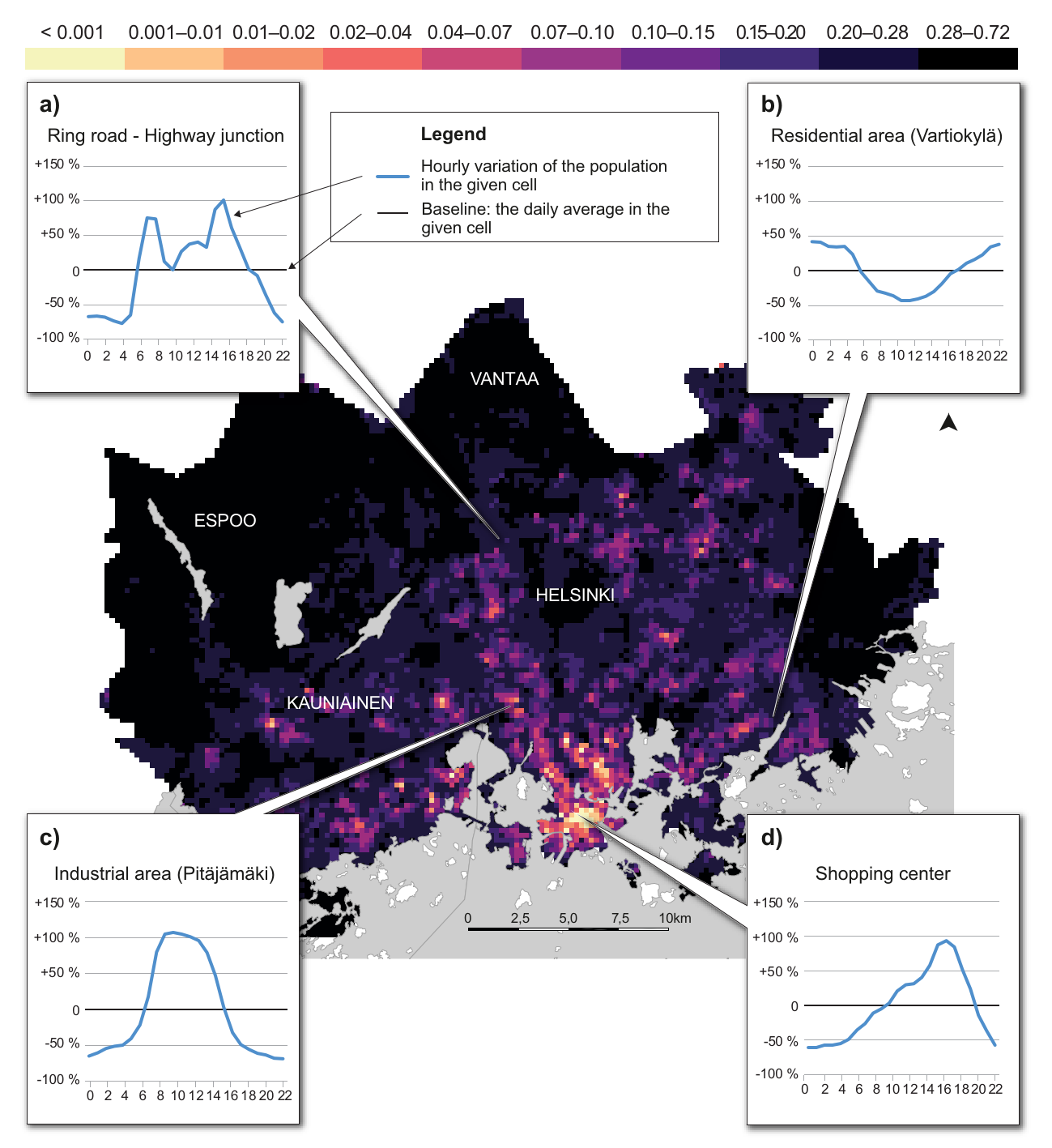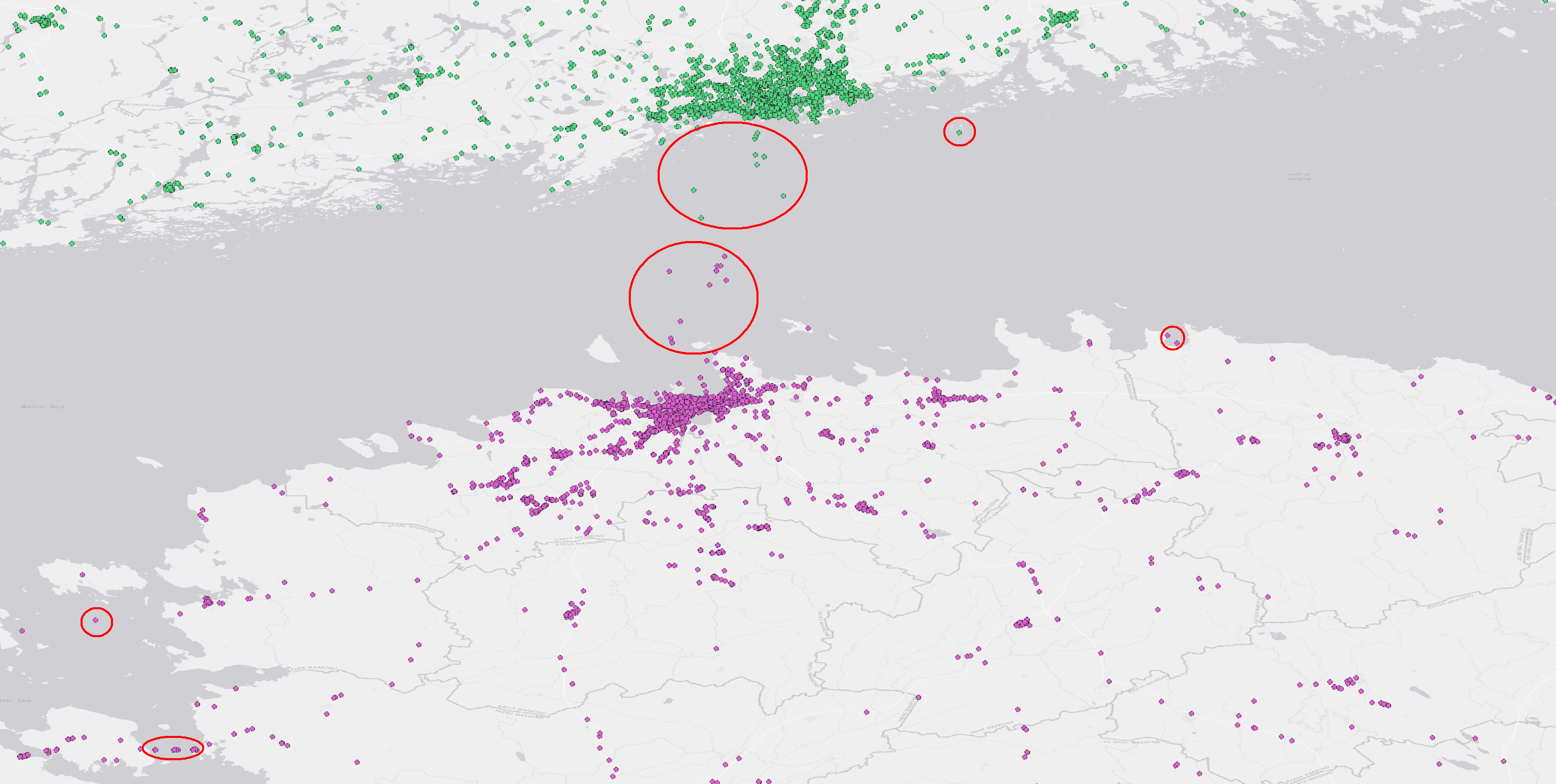Press release
The researchers of the Digital Geography Lab at the University of Helsinki have published spatial data describing the daily rhythms in the population distribution in the Helsinki Metropolitan Area as open data.

Spatial population distribution in the Helsinki Metropolitan Area between 11-12 AM on a regular workday. The diagrams show the variation of the population in given locations during 24 hours from the daily average. (Bergroth et al. 2022)
Their article in the journal Scientific Data describes how the data set was created based on mobile phone data, and how it can be used. This is one of the first times that detailed dynamic population data is released openly for any city of the world. Continue reading “Open spatial data reveals 24-hour population dynamics of people in Helsinki Metropolitan Area”

